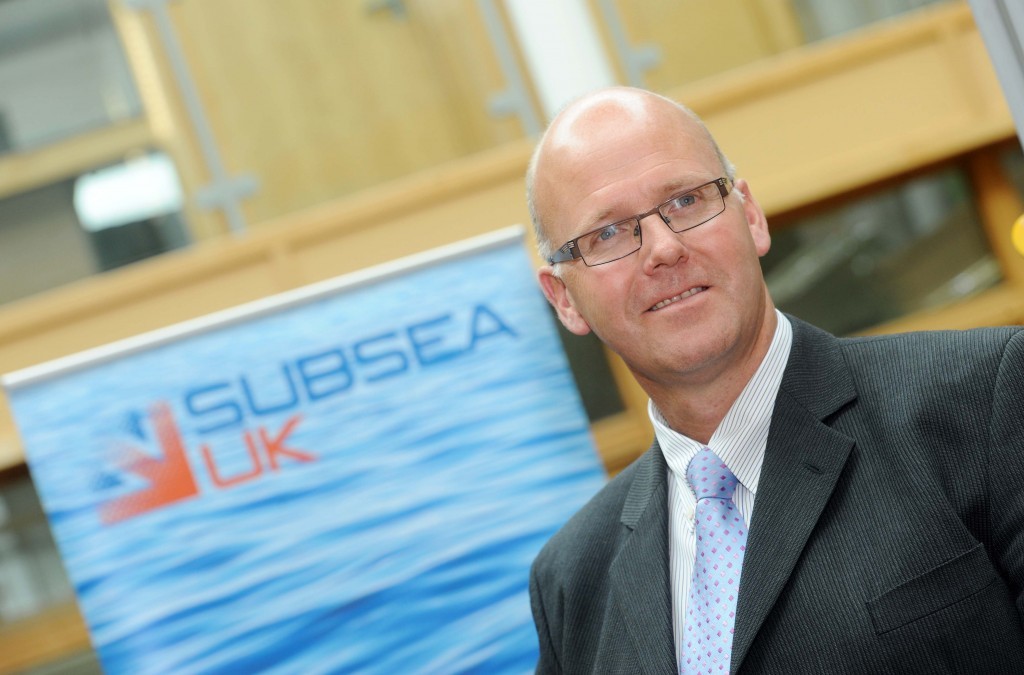
As I reflect on the first couple of days at the Global Wind Summit in Hamburg, the two main considerations are the sheer scale of the opportunity in offshore wind and the similarity of the challenges now facing this industry as it moves into a more mature phase.
No longer can we talk about offshore wind as an emerging sector. It has well and truly come of age and, as a result, is grappling with issues such as reducing cost and risk, driving greater efficiencies, optimising operations, developing and adopting novel methodologies and technologies.
The focus for this year’s event, which brings together the world’s leading exhibition for wind energy with the WindEurope conference, is breaking new ground.
For Subsea UK, and the member companies from across the country who have joined us to present at our Subsea Theatre, it’s about showcasing how our ground-breaking activities can be applied in offshore wind.
Because the subsea industry forged its world-leading position in oil and gas, we are often seen as a sub-set of that industry and not an industry in our own right. The past two days however have given us a platform from which to clearly articulate that we are a world-leader in underwater innovation, engineering ingenuity and manufacturing expertise, operating in offshore renewables, as well as in other industries, of which oil & gas happens to be one.
Our Subsea Theatre, situated within the UK pavilion, has attracted great interest, making it clear that our offering is exactly what the offshore wind industry is currently seeking. Overseas competitors cast covetous glances at our excellence in underwater technology, coupled with the years of experience in underwater engineering. And it’s encouraging to see that our members are making the most of the market opportunity.
The EU has a long-term commitment to reduce greenhouse gas emissions by 80-95%, compared to 1990 levels, by 2050. Wind power plays a crucial role in reaching these targets. The offshore wind industry in Europe is moving fast to become a mainstream supplier of low-carbon electricity and has grown exponentially in recent years, forecasting to meet around 23% of the EU’s electricity demand to 2030. Today, wind energy already meets 11% of the EU’s power demand. Supporting 300,000 jobs and generating €72 billion in annual turnover, the sector is significant. The unprecedented growth is due to increased competitiveness as a result of reduction in the cost of capital, industrial expansion and technological developments
In the quest for subsidy free offshore wind energy, cost-reduction is king. In addition, further challenges are presented by future sites being located further from shore, in harsher conditions and deeper waters – challenges which firmly resonate with companies that have worked in supporting the oil and gas sector as it too moved to more challenging environments.
The Hywind project recently developed by Equinor off the North East coast of Scotland is the world’s first commercial floating wind project and is the enabler for deeper water developments. Many regions around the world have deeper water around their coastlines and floating wind turbines will be a massive growth opportunity for offshore energy production. The challenges associated with deeper water floating turbines is akin to floating systems in oil and gas where the many engineering challenges include; deep sea cable survey, trenching and installation, mooring and anchoring systems, monitoring and maintenance of subsea systems and cables.
Larger turbines and projects also mean larger equipment requirements and new logistics and maintenance issues. The industry is therefore seeking cost reductions across the entire OWF life-cycle, from installation, operation and maintenance through to decommissioning, and its supply-chain which seek to remove wasteful stages and streamline processes – a novel development in the offshore wind industry, but again very familiar to oil and gas.
So, with the scale of this maturing market, there are a multitude of opportunities for subsea companies based on the strengths inherent in the offshore oil and gas supply chain including project management and development, environmental, geophysical, geotechnical, rotating equipment, seabed engineering, structural engineering, cable array and connectors, cable installation, electrical system, ROV and AUV technology etc.
But we must be seen as a stand-alone industry, which cuts across many sectors that includes; wind, wave, tidal, defence, aquaculture, marine science deepsea mining and not simply a sub-set of oil and gas. Equally, our subsea companies must recognise the maturity of offshore wind and approach the industry with solutions for the challenges that maturity presents.
Recommended for you
